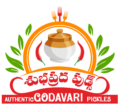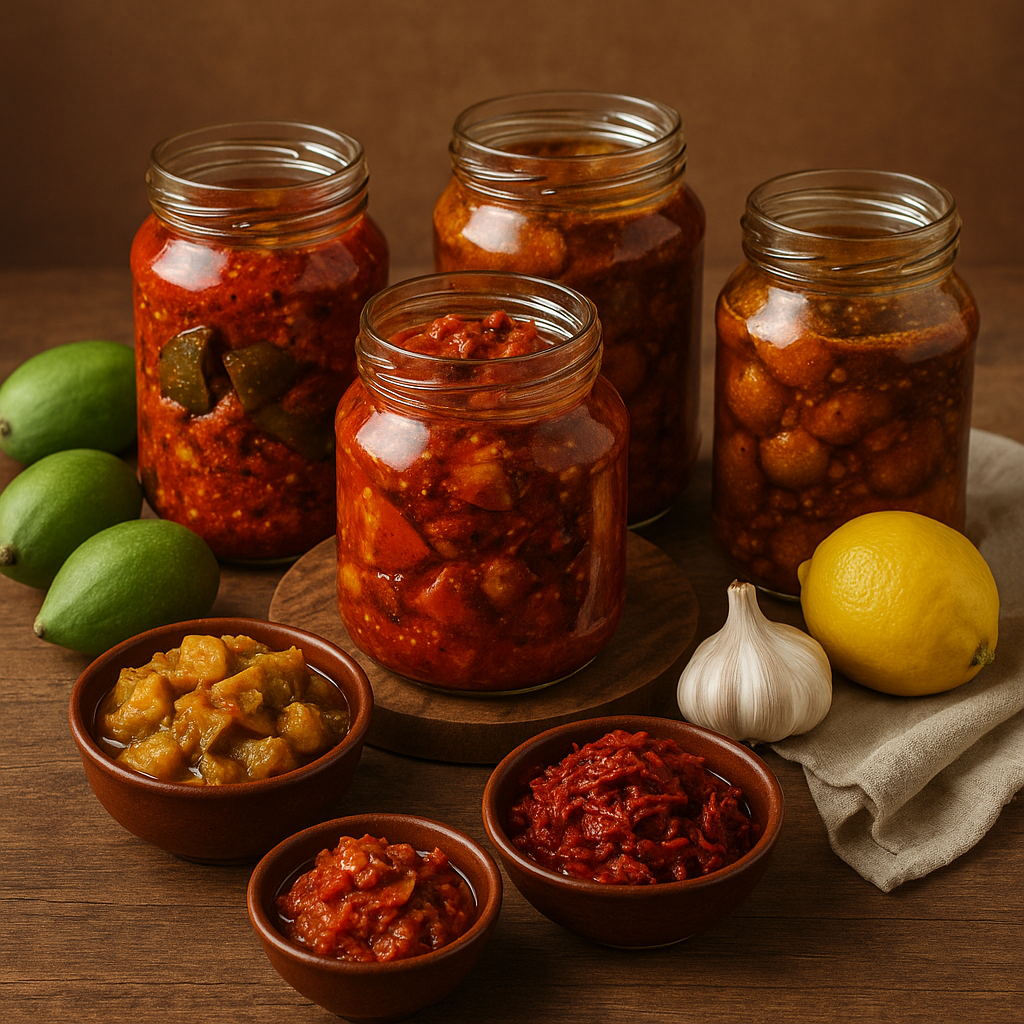Indian pickles are preserved fruits or vegetables, often fermented or cured with a mixture of salt, spices, and oils (especially mustard oil in North India and sesame oil in South India). Unlike Western pickles that use vinegar, Indian pickles usually rely on salt and oil as preservatives.
🧄 Common Ingredients
-
Fruits & Vegetables: Mango, lemon, amla (gooseberry), garlic, green chili, carrot, jackfruit, ginger, turmeric, and more.
-
Spices: Mustard seeds, fenugreek seeds, fennel, red chili powder, turmeric, asafoetida (hing), and nigella seeds (kalonji).
-
Oils: Mustard oil (North), sesame oil (South), sometimes groundnut oil.
-
Salt: Acts as a preservative and draws moisture out of ingredients.
🌍 Regional Varieties
1. North India
-
Aam ka Achar (Mango Pickle): Made with raw mangoes, mustard oil, and a blend of robust spices.
-
Nimbu ka Achar (Lemon Pickle): Tart and tangy, sometimes sweetened.
-
Gobhi-Gajar-Shalgam Achar: A seasonal winter pickle with cauliflower, carrots, and turnips.
2. South India
-
Avakaya (Andhra): Spicy mango pickle made with powdered mustard seeds, red chili powder, and sesame oil.
-
Narthangai (Tamil Nadu): Made from citron, with a bitter-sour flavor.
-
Ginger and Garlic Pickles: Often fiery and pungent, sometimes with tamarind for tanginess.
3. West India
-
Methia Keri (Gujarati Mango Pickle): Less oily, often with fenugreek and mustard flavor.
-
Chhundo: A sweet mango pickle with grated mango and sugar.
-
Limbu nu Athanu (Lemon Pickle): Often sweet and spicy.
4. East India
-
Kasundi (Bengal): A mustard-based fermented relish, sometimes made with green mango or tomato.
-
Panch Phoron Pickles (Bihar/Assam): Using a blend of five spices—fenugreek, nigella, cumin, black mustard, and fennel.
🫙 Preparation & Fermentation
-
Typically made during summer, when sun-drying aids the fermentation process.
-
Ingredients are cleaned, chopped, salted, and spiced, then left in airtight jars to ferment for days or weeks.
-
Regular sun exposure and occasional stirring are crucial to prevent spoilage.
🍽️ Culinary Uses
-
Served as a side dish with rice, roti, or paratha.
-
Used to enhance bland or simple meals like khichdi, curd rice, or dal-chawal.
-
Sometimes used in stuffings, chutneys, or marinades.
🌿 Homemade vs. Store-bought
-
Homemade pickles often follow family recipes and are known for their unique, handcrafted flavor.
-
Commercial pickles are widely available (brands like Pachranga, Mother’s Recipe, and Priya) but may contain preservatives.

